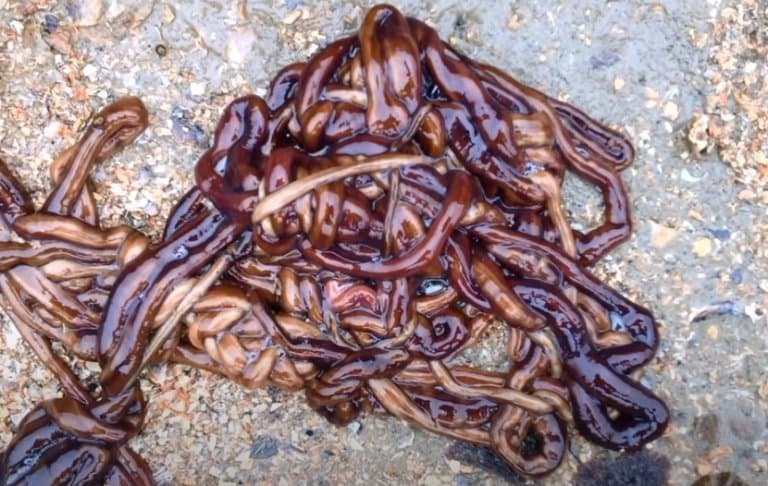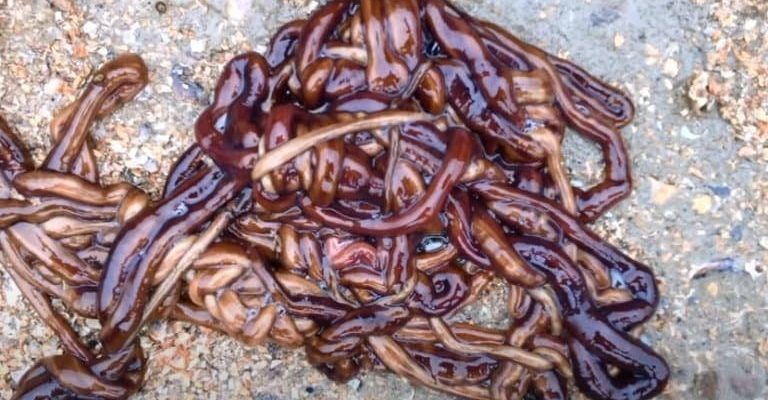
Keeping bootlace worms in captivity sounds like an adventure, but it’s not quite as simple as just putting them in a fish tank. There are special considerations when it comes to their habitat, diet, and overall well-being. Plus, studying these creatures could lead to exciting discoveries in the fields of biology and regenerative medicine. Here’s what you should know if you’re curious about keeping bootlace worms for research or study.
Understanding Bootlace Worms
Bootlace worms are truly a marvel of nature. They belong to a group of organisms called nemerteans, which are often overlooked in the animal kingdom. With their long, slender bodies, they can easily blend into their surroundings—just like a magician’s disappearing act. But don’t let their shy demeanor fool you! They have a complex anatomy that includes a unique feeding mechanism and impressive regenerative capabilities.
Their natural habitat usually consists of shallow marine environments, often found under rocks or buried in sediment. This means that when it comes to replicating their living conditions in captivity, you’ll need to consider factors like water quality and temperature. Creating a suitable environment can be quite the challenge, but it’s essential for their survival and health.
The Importance of Environmental Conditions
When it comes to keeping bootlace worms in captivity, **environmental conditions** make all the difference. Unlike your everyday pet fish, bootlace worms require specific conditions to thrive:
- Water Quality: They need clean, filtered seawater to survive. Contaminated water can make them sick.
- Temperature: Bootlace worms thrive in cooler waters, so maintaining a consistent temperature is crucial.
- Salinity: They live in saline environments, so keeping the right salinity level is also key.
Getting these conditions just right can feel like trying to balance a plate on a stick, but it’s worth the effort for the chance to observe these amazing creatures up close.
Feeding Bootlace Worms
Now you might be wondering, “What do these long, wiggly worms eat?” Bootlace worms are carnivorous, feasting mainly on small marine organisms. In captivity, replicating their natural diet can be a bit tricky. They usually capture prey using a specialized structure called a proboscis, which they extend to snag unsuspecting critters. But in a controlled environment, you’ll have to get creative.
To keep your bootlace worms happy and healthy, you can consider feeding them a diet of:
- Small crustaceans, like brine shrimp
- Soft-bodied marine worms
- Fish eggs or larvae
Feeding them a varied diet is important to ensure they get all the nutrients they need. You wouldn’t want to eat the same thing every day, right? Variety keeps it interesting!
Challenges of Captivity
While the idea of keeping bootlace worms in captivity for study is intriguing, there are challenges to consider. First and foremost, their sheer length can pose logistical issues. Housing a bootlace worm requires ample space and careful management to prevent stress and injury.
Additionally, their sensitivity to water quality means constant monitoring and maintenance. If even a small change in the environment occurs, it could be detrimental to their health. Imagine the frustration of trying to keep a delicate balance while also observing them closely for research!
Here’s the thing: not all researchers have access to the necessary facilities to create an ideal environment. For those interested in studying bootlace worms, it may be more practical to focus on observing them in their natural habitats rather than attempting to keep them in captivity.
Observation vs. Captivity
In many cases, researchers find that **observing bootlace worms in the wild** is more effective than trying to keep them contained. By studying them in their natural habitat, scientists can gather valuable data without stressing the animals.
Field studies allow researchers to see how these creatures interact with their ecosystems. They can learn about their behavior, feeding patterns, and regeneration processes in an environment where the worms are most comfortable. Plus, you get a front-row seat to witness the magic of nature—no aquarium required.
Regeneration and Research Potential
One of the most fascinating aspects of bootlace worms is their ability to regenerate lost body parts. This unique feature has caught the attention of researchers worldwide. Understanding how they do this could provide insights into regenerative medicine for humans.
In captivity, studying this regeneration process could lead to groundbreaking discoveries. But, it’s important to note that attempting this in a controlled environment requires careful experimentation and ethical considerations. The goal should always be to learn without causing harm to the animals.
Researchers may look at factors like how quickly a bootlace worm can regenerate after losing a segment or how environmental conditions affect this ability. These studies could pave the way for new treatments in medicine, making their study worth the effort, even if it poses challenges.
Ethical Considerations in Keeping Bootlace Worms
When it comes to keeping any creature in captivity, ethical considerations should always be top of mind. Bootlace worms, like all living beings, deserve to be treated with respect and care. Before deciding to keep them for study, it’s vital to ask yourself some important questions.
*Are you prepared to provide the necessary environment?*
*Will you be able to ensure their health and well-being?*
*Is it more beneficial to observe them in their natural habitat instead?*
These questions can guide your decision, ensuring you act responsibly as a researcher. The aim is to contribute positively to our understanding of these creatures while prioritizing their welfare.
Keeping bootlace worms in captivity for study can be a fascinating yet complex endeavor. While it’s an exciting opportunity to learn about these remarkable creatures, significant challenges, such as maintaining their specific habitat and feeding needs, come with the territory.
Ultimately, the decision to keep them should be made thoughtfully, considering both the potential for scientific advancement and the ethical responsibility we have towards these animals. Whether you decide to venture into captivity or observe them in the wild, bootlace worms will continue to captivate minds and spark curiosity about the wonders of the natural world.

